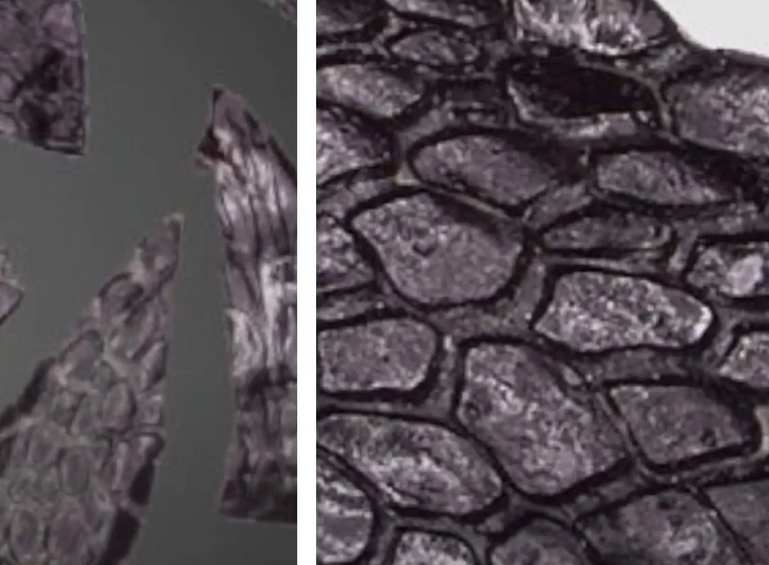Researchers Discover Oldest Known Skin Fossil
Scientists have uncovered the most ancient skin fossil, dated to about 286 million years old. But the creature it belonged to remains a mystery for now. The textured fragment exceeds previously known skin fossils by over 21 million years.
Texture and Features Suggest Reptilian Affinity
The fossil skin has a distinct pebbled texture akin to modern crocodile hide. Microscopic observation revealed detailed skin tissues seen in amniotes – the group including reptiles, birds and mammals.
Amniotes evolved from amphibians to thrive on land supported by key skin adaptations preventing water loss. The fossil skin likely helped its owner adapt to terrestrial living long ago.
Rare Preservation in Oklahoma Cave Deposits
Researchers extracted the fossil from an ancient Richards Spur limestone cave system in Oklahoma, containing fine clay and oil deposits that enabled remarkable preservation. Animals falling in became buried in oxygen-lacking sediments delaying decay.
Specialized locales with fine sediments, few oxygen pores and stabilizing minerals promote fossilization of soft tissues like skin, feathers or fur that normally decompose.
Links Skin Evolution to Land Colonization
Study co-author Tea Maho was struck by the skin’s microscopic intricacy retained over 286 million years. The outer barrier was critical for vertebrate survival out of water.
The fossil traces skin’s key evolutionary role allowing amniotes to permanently occupy land, a pivotal step in terrestrial ecosystem establishment.
Resemblance to Modern Reptiles Offers Clues
The skin’s scaly surface and flexible regions between scales suggest potential reptilian affinities. But connecting it to exact species will need finds of associated skeletons in the vicinity.
While a reptile lineage seems likely, lacking skeletal links prevents definite connections. Further excavations could help identify this pioneering land dweller.
About Richards Spur
- Richards Spur is a fossil site from the Permian period situated in the Dolese Brothers Limestone Quarry, located north of Lawton, Oklahoma.
- This site is characterized by the preservation of clay and mudstone fills within fissures of a karst system that was carved out of Ordovician limestone and dolomite.
- The filling process occurred during the Artinskian stage of the early Permian (Cisuralian), approximately 289 to 286 million years ago.
- The site boasts abundant and well-preserved fossils of terrestrial animals, showcasing one of the most varied Paleozoic communities of four-limbed vertebrates on record.
Month: Current Affairs - January, 2024
Category: Science & Technology Current Affairs







